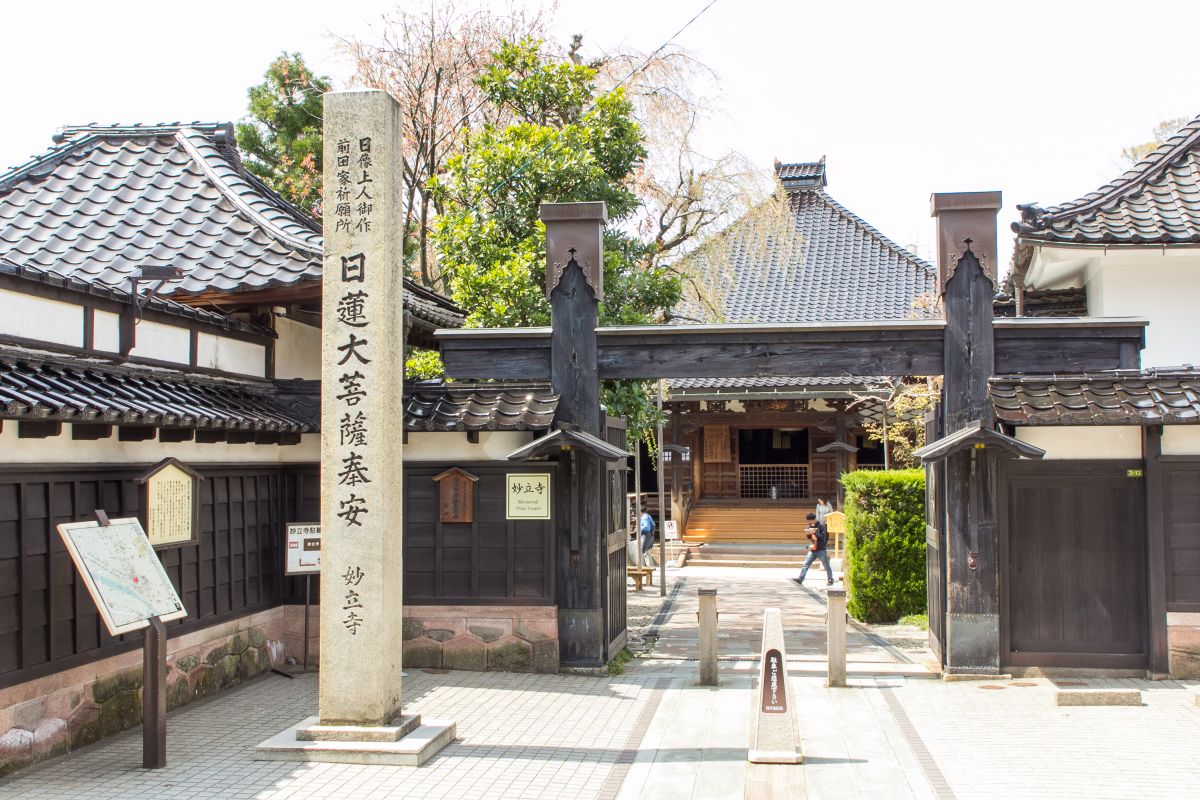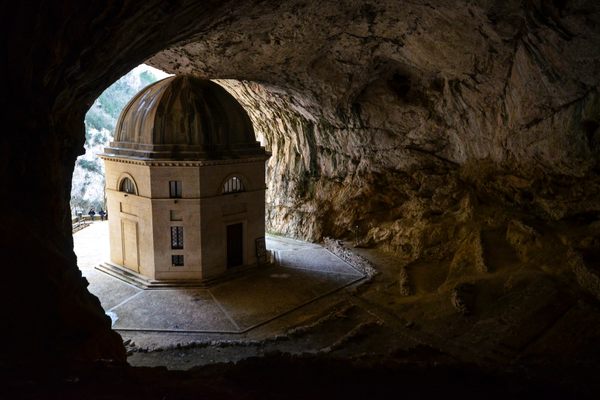About
Originally established in 1583 as a small prayer hall by samurai lord Maeda Toshiie, the Myōryū-ji temple was built in 1643, by his son Toshitsune. Hoping to prevent the Tokugawa shogunate from laying him off, Toshitsune married Tokugawa's daughter and purposefully played the fool while he founded a temple complex where his samurai warriors could live and keep possible enemies under close surveillance.
Designed as a secret fortress, the temple contains a variety of tricks and gimmicks, such as hidden stairs and rooms, pit traps, underground tunnels, and a watchtower. Because the government at the time prohibited construction of buildings more than three stories high, Toshitsune designed the temple so that it would appear to be two stories high on the outside—but is actually has four stories on the inside. There are 23 rooms and 29 staircases, as well as two hidden mezzanines.
The watchtower, for example, can be accessed through a door hidden in the middle of a secret staircase disguised as a closet. One of the staircases has a hidden trap pit that leads down to the servants' room, so that an unwary intruder could be attacked by a guard stationed below.
Another possible gimmick is the well, located at the center of the building. It's 80 feet deep, but there's—supposedly, though this is unconfirmed—a tunnel that branches off of it, about 12 feet above water's surface, that leads to nearby Kanazawa Castle. But no one has ever attempted to use the tunnel and no known historical texts mention its existence.
These secrets and quirks have led the temple to be known as the Ninja Temple, even though (to the best of our knowledge) it has never been associated with covert agents known as ninjas. Due to its architectural complexities and current decrepit state, visitors need to book a group tour in advance and be accompanied by a guide.
Related Tags
Know Before You Go
The temple is less than 10 minute walking from Nomachi Station. It is open from 9 a.m. to 4:30 p.m., or to 4 p.m. in the winter months. As stated above, advance booking is required. The tour costs ¥1,000 for those over 12,¥700 yen for children over six years old, and younger children are not allowed to enter. Tours are conducted only in Japanese, though English guidebooks are provided at request. You will also be asked to not speak in languages, other than Japanese throughout the tour. Backpacks and other large bags are prohibited for fear of damaging the building. Photography and smoking are not allowed, either, and visitors will be asked to remove their shoes upon entering.
Hidden Japan: Sado Island, Nara & Kyoto
Explore a different side of Japan.
Book NowCommunity Contributors
Added By
Published
August 17, 2020





























